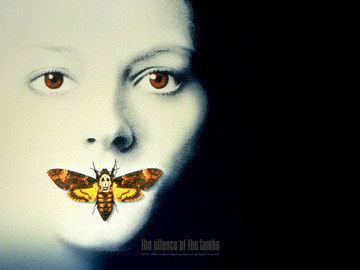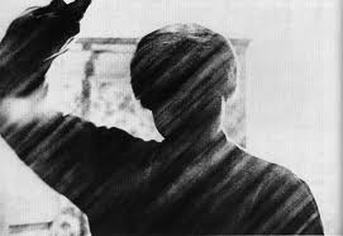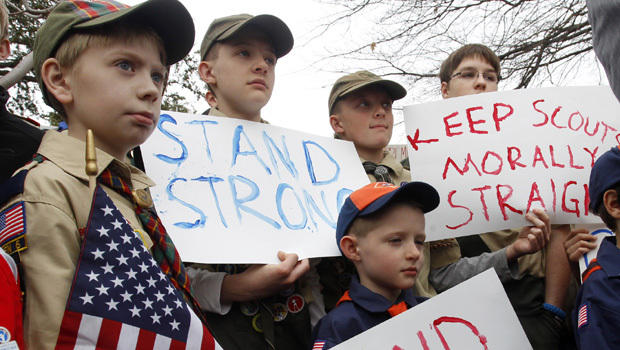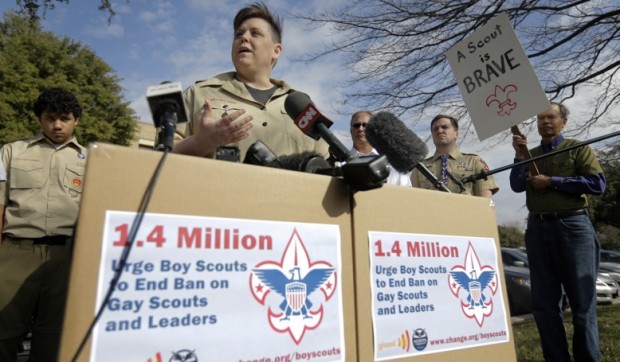 The Silence of the Lambs has a transphobic message The Silence of the Lambs has a transphobic message
Hollywood is a routine offender in promoting transphobia and cissexism—the negative attitudes and discrimination directed toward people whose gender identity, or perceived expression, is different from the sex they were assigned at birth. In my view, few films are as offensive as Jonathan Demme’s Silence of the Lambs, which demonizes and delegitimizes transgender individuals through portraying the serial killer, Jame Gumb—otherwise known as Buffalo Bill—as a psychotic transgender person. At the same time, normative expressions of gender are idealized as innocent. The result is a transphobic dichotomy with cisgender and transgender positioned as moral opposites. For those who haven’t seen the film, Silence of the Lambs follows FBI Academy student Clarice Starling, played by Jodi Foster, as she solves a recent string of murders in the Midwest committed by the serial killer known as Buffalo Bill, played by Ted Levine. She enlists the help of an incarcerated cannibalistic serial killer and former psychiatrist, Hannibal Lecter, who analyzes the case files in order to uncover Buffalo Bill’s true identity. In this process, Starling discloses a traumatic event in her childhood involving waking up to the screaming of lambs about to get slaughtered. She ran away from her family ranch, attempting to save one of the lambs, but was unable to. Here, lambs are a symbol of innocence. Starling’s inability to save them and her subsequent nightmares are manifestations of her guilt. The film’s title is a reference to the end of Starling’s nightmares, when the screaming lambs become silent, ideally through her solving the Buffalo Bill case and saving his living victim, Catherine Martin. Throughout the film, it is revealed that Buffalo Bill is a transgender woman. She has applied for sex-reassignment surgery, cross-dresses, and prefers to hide her penis between her legs. Ultimately, Starling saves Martin through the clues that Lecter slowly discloses in exchange for a chance at a prison with better living conditions. In the end, Starling kills Gumb, and the closing scene of the film is of Lecter’s escape and intent to kill Frederick Chilton, a doctor who worked at Lecter's prison.  The trope of the killer transgender appeared in Psycho (1960) The trope of the killer transgender appeared in Psycho (1960)
Jame Gumb’s gender identity is handled in a number of very problematic ways. First, her character is a classic example of the killer transgender trope, also famously present in Alfred Hitchcock’s Psycho. Transgender women are often represented as psychotic killers as a lazy method of responding to mainstream society’s fear of gender nonconforming people. This popular trope in film reinforces the idea that being transgender is unnatural and perverted, and pathologizes gender fluidity. It’s a stowaway on the Hollywood global distribution machine, reaching into countless theaters and homes around the world and embedding transphobia in the minds of a wide array of viewers.
In reality, the opposite of the killer transgender trope is true. Often, transgender people, specifically women, are the victims of hate crimes based on their gender identity. In 2012, transgender women were victims of nearly 54% of anti-LGBT related homicides. Perhaps the dehumanizing representations of these individuals in mass media helped spread the idea that transgender lives are less valuable, and by extension, murdering them is more justifiable.
A closer look at the diction of Lecter’s quote reveals more subtle issues. His use of the word “more” before “savage” and “terrifying” implies that there are savage and terrifying elements to actual transgender people. Since Hannibal Lecter is a serial killer himself, one might question his credibility as an arbiter of the film’s overall message. However, in addition to being a sociopathic serial killer, he was also a brilliant psychiatrist, whose analysis of the Buffalo Bill case files led to Gumb’s ultimate demise. His views regarding Gumb are highly regarded and portrayed as astoundingly accurate. Therefore, his psychoanalysis of Gumb represents the ultimate message of the film itself and should be seriously considered. One of the most memorable scenes in Silence of the Lambs is the one where Gumb dresses up in a flowing cloth, tucks her penis between her legs, and poses in front of a mirror, all while wearing the hair and scalp of one of her victims. This scene is often touted as the film’s most disturbing moment. Buffalo Bill is supposed to be scary not only because she murders and skins her victims, but because she is male-bodied in women’s clothing. The “cross-dressing” is portrayed as especially sinister and perverted, but to stand or dance in front a mirror with one’s penis tucked between her legs is an exercise many transgender women actually perform. The film distorts this completely normal and often empowering activity with the juxtaposition of Catherine Martin screaming for help from the bottom of a dry well in the background. Real life transgender people may internalize this scene, and think that they should hide their non-normative gender expressions at the expense of their emotional well-being. In addition to demonizing and stigmatizing gender fluidity, Silence of the Lambs idealizes normative gender expression. Conformity to gender roles is seen as innocent, an antithesis to gender variance. This is emphasized in the scene in which Gumb applies lipstick as she utters the chilling line, “Would you fuck me? I’d fuck me. I’d fuck me hard.” This scene is cut at the same time as Martin screams from the bottom of the well, just as the lambs screamed. Nobody could hear Martin, she was effectively silenced. The film showed a few seconds of Gumb, then switched back to a few seconds of Martin. Martin is illustrated as the innocent victim, conforming to the gendered damsel in distress trope, in contrast to Gumb, who is the gender-bending killer. It is important to identify transphobia in films for a variety of reasons. In addition to media reflecting the prevalent attitudes and ideas of a society, media can also shape the ideas of a society. The negative representations of transgender people in visual media, especially film, contribute to their overall discrimination. In addition to the disproportionate amount of transgender women killed in anti-LGBT homicides, there is a high frequency of suicide among this subjugated population. 41% of Americans who are transgender or gender nonconforming have attempted suicide at least once in their lives. This startling statistic may be related to the lack of positive media representation for transgender people. Identifying transphobia and cissexism in film is a means of placing the responsibility back on media corporations and holding them accountable for how they portray marginalized groups. Fair portrayals of oppressed groups of people leads to an awareness of their real life issues. For transgender people, such issues include job discrimination, violence, healthcare, and exclusion in a variety of spaces. In real life, transgender people are not the killers, but rather the innocent victims of horrific hate crimes. The film Silence of the Lambs ignores this fact, effectively silencing the lambs. Savannah Staubs Savannah Staubs is an undergraduate sociology major and activist at University of Maryland, College Park. She skillfully avoids employment by illustrating zines, collecting leaf skeletons, playing her ukulele, and studying environmental justice. The Boy Scouts is an American value-based youth organization that focuses on the development of boys into productive and responsible citizens by empowering them to be leaders in their communities. According to the Boy Scouts official mission statement, “[t]he mission of the Boy Scouts of America is to prepare young people to make ethical and moral choices over their lifetimes by instilling in them the values of the Scout Oath and Law.” Scout Law defines a Boy Scout as “trustworthy, loyal, helpful, friendly, courteous, kind, obedient, cheerful, thrifty, brave, clean, [and] reverent,” universal characteristics which encourage all boys to become “responsible, participating citizen[s] and leaders”. However, the Scout Oath discerning the values that the boys must swear allegiance to includes the declaration that they will keep themselves “physically strong, mentally awake, and morally straight.” The exact meaning of “morally straight” has recently come under scrutiny and debate across the nation. For example, this news video features Peter Sprigg, Senior Fellow on the Family Research Council, encouraging “the Boy Scouts to stand firm with the timeless principles they have always represented” and to specifically uphold “moral principles,” which means discouraging homosexuality: In January, the Boy Scouts of America met to vote on their policy that excludes membership to gays, lesbians, and transgendered individuals, but postponed the vote due to the “complexity of the issue”. While individual troops may choose to overlook the enforcement of this policy, the Boy Scouts handbook explicitly states that “[w]hile the BSA [Boy Scouts of America] does not proactively inquire about the sexual orientation of employees, volunteers, or members, we do not grant membership to individuals who are open or avowed homosexuals or who engage in behavior that would become a distraction to the mission of the BSA [emphasis added by author]” (BSA-discrimination.org).This erroneously argues that LGBT people distract boys from becoming “responsible, participating citizens and leaders” in a way that blatantly suggests openly gay members are not capable of participating as full, equal members of society. Arguing that openly gay members would stop boys from making morally sound decisions subordinates the masculinity of gay men by claiming that their reasoning and morality is defective in comparison to heterosexual men’s masculinity. Presumably, the primary reason for this is their deviance in preferred sexual partners. This second clip of popular right-wing Christian leader Pat Robertson attempts to cast doubt about homosexual men’s masculinity as immoral and conflated with pedophilia, which reasserts that the most normal and accepted form of masculinity as one that is exclusively heterosexual: Pat Robertson’s and Peter Sprigg’s claims exist as a part of public discourse on the issue even though the majority of the scientific community, including the American Psychological Association, have soundly disproven these claims. In light of this, similar organizations, such as the Girl Scouts of America, have subsequently altered their policies to be inclusive of LGBT members for a number of years. One way of analyzing the continued defense of this policy by the Boy Scouts is through the lens of Raewyn Connell’s theory of hegemonic masculinity. Connell (2005) describes hegemonic masculinity as “the pattern of practice (i.e., things done, not just a set of role expectations or an identity)” that establishes more than men’s dominance over women. Connell adds that hegemonic masculinity asserts other forms of masculinity as subordinate in relation to it and “embodie[s] the currently most honored way of being a man.” It “require[s] all other men to position themselves in relation to it.”
Through this lens, the Boy Scouts’ ardent defense of an anti-LGBT policy can be seen as an attempt to reaffirm a rigid gender binary with the most popular version of a right, moral or correct masculinity. Not only does it establish that real men are strong and brave, but also heterosexual. It subjugates men who are attracted to other men, and portrays them as ”immoral”. Accordingly, part of the power of hegemonic masculinity in shaping gender norms rests in the subordination of alternative masculinities. Therefore, dislodging this type of masculinity from being seen as more moral and acceptable than other marginalized masculinities, such as queer masculinities, is a necessary step for these men to gain equality and power to voice their concerns about issues in their community. As long as gay men are prevented from participating fully in mainstream organizations, especially those concerned with morality and ethics, issues disproportionately affecting their community, such as the endemic of HIV/AIDS, cannot be fully addressed.
Elizabeth Dickson Elizabeth Dickson is a student at Ohio Wesleyan University, where she is double-majoring in Psychology and Sociology.
Originally posted on Daspletosaurus
YouTube officially launched in December 2005 as a simple way for people to easily share videos with each other. By July 2006, 100,000,000 videos were being viewed and 65,000 were being uploaded per day. On October 26, 2006, Google bought the company for $1.65 billion. Now the site reports over 2 billion videos are being viewed per day, and needless to say, it dramatically altered the way celebrities are created and information is transmitted via the internet. Within the internet, various forms of media like pictures, videos, websites, and news stories are known to go viral. This is defined as "process which gives any information item (picture, video, text, or any other audio–visual–textual artifact) the maximum exposure, relative to the potential audience, over a short duration, distributed by many nodes" (Nahon et al. 2011: 1). There are websites dedicated to highlighting viral content such as The Daily What, BuzzFeed, reedit, and Cute Overload (my personal favorite). Social networking platforms like Twitter and Facebook making sharing viral content easier than ever as well. YouTube's Trend Manager Kevin Alloca says there are three reasons why videos go viral: 1. Tastemakers 2. Participation and 3. Unexpectedness. Tastemakers are those of significant importance who promote a video to a larger audience, be it through a Tweet, blog posting, or link on Facebook. In this video from the TED Talks series, he shows how a simple Tweet from comedian and late night talk show host Jimmy Kimmel made the infamous "Double Rainbow" video a phenomenon. Participation involves users spreading the videos to others and usually at a very rapid rate. Unexpectedness refers to the nature of the video. For example, your friend might share with you the video "The Sneezing Baby Panda". What at first looks like a mother panda chomping on some bamboo ultimately surprises the viewer by featuring a tiny baby panda sneezing and startling the mother -- it's the unexpectedness that makes you want to share the video. Keep in mind this video has been viewed over 135 million times since November of 2006. While many viral and YouTube videos involves kittens, puppies, babies, and Justin Bieber, there are also a great deal showcasing social inequalities, thus offering opportunities for social commentary. A few popular ones are featured in the video above. With the opportunity to comment on said videos and share via Facebook, it is easy to create a dialogue and discuss the bigger issues at hand. Serious videos of poignant Senate hearings, personal confessions, and documentary-type shorts showcase current and debatable issues and are easily accessible to a large audience over the internet and through mobile devices and tablets. A perfect example of such a video and the impact it can create is the It Gets Better Project. After a string of suicides brought on by bullying of LGBTQ or perceived to be youth, syndicated sex columnist Dan Savage and his husband Terry Miller posted a simple and inspiring video on YouTube on September 21, 2010. They shared their own experiences with middle and high school bullying, but also recalled how much better their lives got after they graduated. They talked about growing up, coming out, and experiencing life in much more positive and accepting places. Dan and Terry retold the story of how they met and created a family with the adoption of their son. They also talked about how their families, who were initially resistant to their coming out, came around to loving them just the way they are. Dan and Terry wanted to provide hope to LGBTQ kids and teenagers all over the world who were scared and suffering so that they would not resort to taking their own lives. Within a matter of what seemed like days, the It Gets Better Project exploded and a movement began. More than 40,000 videos have been posted and viewed more than 40 million times. Prominent celebrities such as Stephen Colbert and Ellen, television show casts, everyday normal people, politicians, and even President Obama posted videos assuring kids that it does get better. Since the project's launch, it has developed into a fully-functioning non-profit and advocacy organization, joined forces with The Trevor Project, published a book, and created an MTV special. However, not all socially-aware viral videos deal with topics in such a serious matter. The parody song "Chow Down (At Chick-Fil-A)" features three drag queens singing about anti-gay sentiments behind the delicious fast-food chain Chick-fil-A. Sung to the tune of "Hold On" by Wilson Phillips, the drag queens lament on how "someday somebody’s gonna make you wanna gobble up a waffle fry" even though Chick-Fil-A says the gays "make the baby Jesus cry". Videos like these showcase social inequalities in a fun and catchy way (find more on the Chick-Fil-A video here) YouTube user and comedienne Francesca Ramsey's "Shit White Girls Say...to Black Girls" tackles race and cultural sensitivities in a light-hearted and funny way as well. The video is a response to the popular series "Shit Girls Say." In an editorial for the Huffington Post, Ramsey writes, "Over the years I've found that dealing with white people faux pas can be tricky. If I get upset, I could quickly be labeled the 'angry black girl.' But if I don't say anything or react too passively, I risk giving friends and acquaintances permission to continue crossing the line. So I decided to create my own parody." In a way, her video acts as a "cultural guide" and how-to on sensitively dealing with cultural differences. While I do enjoy and admit to sharing these videos, it is hard to tell if they really do result in change. I still believe they are beneficial. The ability to comment on such videos through various websites like Facebook and YouTube also create an easy way for users to start a dialogue and discuss the video's content. Hopefully valiant efforts like these really are making a difference. Videos featured in the above clip: Kevin Allocca: Why videos go viral Shit White Girls Say...to Black Girls Kony 2012 It Gets Better: Dan and Terry Telling My Dad I'm Gay-LIVE Chow Down (At Chick-Fil-A) Other favorite videos of mine that I could not include in my own video: 5-year-old needs a job before getting married The Gay Rights Movement It Gets Better: BD Wong Joel Burns tells gay teens "it gets better" Republican Chokes Up At Gay Marriage Debate In Washington Sesame Street: Grover discusses What Is Marriage? Zach Wahls Speaks About Family References 1. YouTube 2. Fifteen Minutes of Fame: The Power of Blogs in the Lifecycle of Viral Political Information 3. It Gets Better Project 4. From Meme to Social Commentary Christine Moore
_
It seems a week rarely passes without a story or a video like this one circulating through the news cycle. As someone who has spent the better part of the last decade studying teenage boys, I have seen much of this bullying behavior first hand. This video, while dramatic, is not so different that the sorts of interactions I saw as I “hung out” with young men and talked to them about their definitions of masculinity. Our children are bullying and being bullied. Thirty-two percent of young people from fifth to twelfth grade report having been bullied at least once in the past month.1 Nowhere perhaps has the discussion of bullying been more pronounced than in recent reports of the bullying of LGBTQ young people. GLSEN’s 2009 School Climate Survey indicates that eight in ten LGBTQ students (age 13-21) have been verbally harassed at school and four in ten had been physically harassed. Given these numbers, this attention is welcomed and needed. However, the current popular discourse on bullying, with its focus on individual bullies, rather than a social order that gives rise to aggressive behaviors in groups of people, misses some key components of bullying. This general discussion (not to mention much of the academic research) about bullying often ignores an important component, specifically the role of masculinity. That is, much of the bullying behavior, especially homophobic bullying, between boys, functions to enforce contemporary definitions of masculinity as dominant, heterosexual, competent, and powerful. By ignoring the role masculinity plays in these aggressive, often homophobic, interactions, much of the discussion about bullying makes it seem as if a particular type of person bullies and a particular type of person is victim to it. While this is certainly an important approach when it comes to making life better for our youth, it is also true that this type of aggressive behavior is found in relationships between many boys, even in seemingly friendly interactions. To address all forms of bullying these popular discussions need to look seriously at the role of gender in these interactions and not assume that there is only a certain type of (pathological) person that bullies and a certain type of person who is bullied. The reality of our kids’ lives is much more complex.
_
Are LGBTQ kids bullied? Absolutely. GLSEN, the GSA network and the Human Rights Campaign (among others) have documented this extensively. But here is the problem. In framing so much of this bullying discourse about sexual identity, the fact that much of this bullying is directed at straight identified boys (from other straight identified boys) disappears. The Safe Schools Coalition documents that 80% of the recipients of homophobic harassment identify as straight. It is unlikely that the targets of the song in the above video identify as gay, and if they do, it is doubtful their tormentors are aware of this fact. So, what is this about? Masculinity. This sort of bullying when coming from and directed at (mostly straight)boys, has as much to do with shoring up definitions of masculinity as they do with understandings of sexuality (though of course the two are deeply related). When I talked to teenage boys about these types of homophobic taunts, they often tell me such epithets are simultaneously the most serious of insults and have little to do with sexuality. As one boy told me, “To call someone gay or fag is like the lowest thing you can call someone. Because that’s like saying that you’re nothing.” Another claimed “Fag, seriously it has nothing to do with sexual preference at all. You could just be calling somebody an idiot, you know?” Another made it perfectly clear when he told me, “Being gay is just a lifestyle. It’s someone you choose to sleep with. You can still throw around a football and be gay.” In other words, a guy could be gay so long as he acts sufficiently masculine. According to the analysis set forth by many of the young men I talked to about homophobic epithets, the boys in the video are not being harassed because they are gay, but because the fans are trying to emasculate them (apparently because they support the wrong baseball team). Boys tell me that even the most minor of infractions can trigger this type of homophobia. One boy told me that you could suffer this kind of harassment for doing “Anything…literally, anything. Like you were trying to turn a wrench the wrong way, ‘Dude, you’re such a fag.’ Even if a piece of meat drops out of your sandwich, ‘You fag!’” Boys are continually vulnerable to this sort of harassment should they reveal in any way a lack of competence, femininity, weakness, inappropriate emotions or, yes, same sex desire. It seems that boys are frequently trying to avoid these epithets by acting sufficiently masculine, part of which entails lobbing these epithets at other boys when their performance of masculinity lapses, even mildly and or for a moment. While these videos show aggressive, indeed scary, forms of bullying, these messages about masculinity frequently also appear in more friendly interactions among boys and young men. Take this famous, and problematically funny, scene from the film 40 Year Old Virgin (and another version of it from Knocked Up), for example:
_
In it two friends tease each other by answering the question “know how I know you’re gay?” Clearly, neither thinks the other is actually gay. What they are doing here is reminding each other about what it means to be a man. A real man does not sew, cook, wear clean clothes, like certain types of music and certainly doesn’t sleep with other men. Much of the homophobic bullying that goes on among young men (and in this instance, adulthood!) happens between friends, in a seemingly joking way. Joking, however, does not make the messages about masculinity any less serious. Just like the baseball fans, these men are sending each other messages about appropriate masculinity through aggressive joking. This type of joking, where the goal is to humiliate or embarrass another, contains important messages about masculinity and because of the humor involved we don’t often recognize it as a possible form of bullying. When we begin to think about bullying as something that goes on in boys’ friendships, not just between enemies, it calls into question the dominant framing of bullying as something that happens when one individual targets another individual. If we start to think about bullying as one of the ways boys assert masculinity and remind others to be appropriately masculine, than it is less an issue about one boy targeting another boy, than it is about the “friendly” bullying that happens between boys as they joke. Looking at bullying in this way suggests that it is not necessarily about some individual pathology (though of course it certainly can be), but also be about shoring up definitions of masculinity.
_
Given this reframing of bullying, we may want to rethink the way we use the word bully for a few reasons. When we call these interactions between boys bullying and ignore the messages about masculinity embedded in their serious and joking relationships, we might risk divorcing what they are doing from larger issues of inequality and sexualized power. In doing so, we run the risk of sending the message that this sort of behavior is the domain of youth, certainly not something in which adults engage. It allows adults to project blame for this sort of aggressive behavior on to kids, rather than acknowledging that their behavior reflects (and reinforces) society-wide problems of gendered and sexualized inequality. It allows us to tell them “it gets better,” as if the adult world is so rife with sexual and gender equality. It allows us to evade the blame for perpetuating problematic definitions of masculinity that these kids are merely acting out.
__References
C.J. Pascoe |
.
.
Tags
All
|



 RSS Feed
RSS Feed